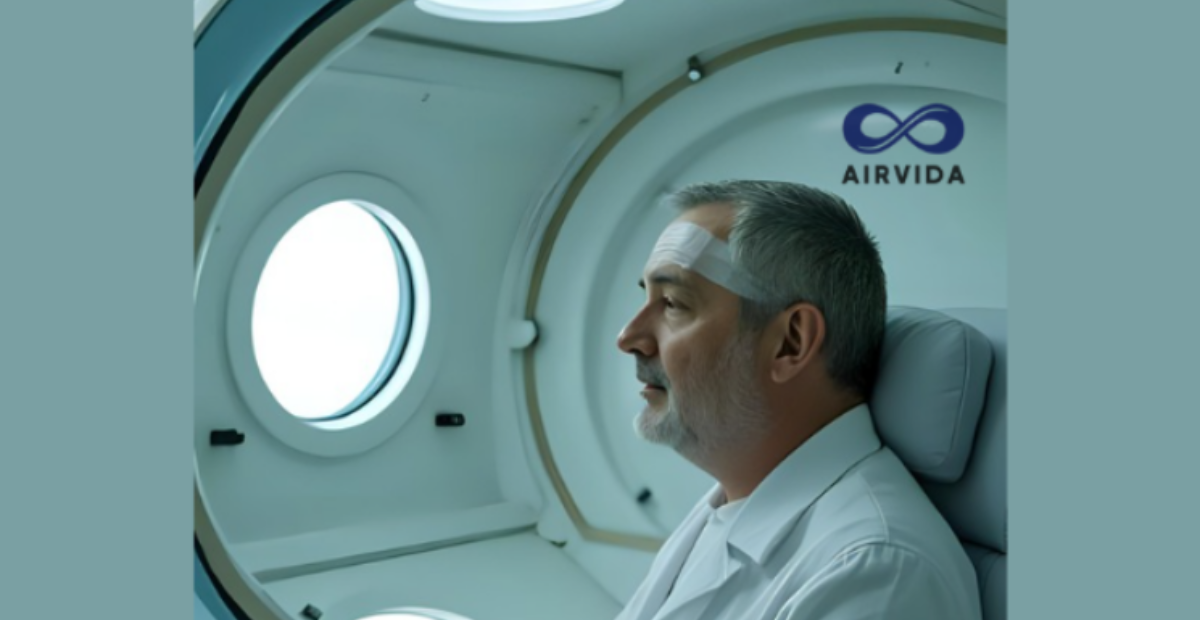A hyperbaric chamber for wound care may offer a supportive approach for individuals struggling with slow-healing or complex wounds. By creating a pressurized environment where the body absorbs higher levels of oxygen, this therapy might promote tissue repair and improve circulation in areas needing extra support.
In the sections that follow, we’ll explore how hyperbaric oxygen therapy is thought to assist with wound healing, review potential benefits and limitations, and highlight available chamber options for personal and clinical use. Continue reading to gain deeper insights into whether this therapy could play a role in your recovery journey.
What Is Hyperbaric Oxygen Therapy?
Hyperbaric oxygen therapy (HBOT) involves sitting or lying inside a chamber where air pressure is increased beyond normal levels. In many cases, individuals breathe concentrated oxygen, which allows the lungs to absorb and carry higher levels of oxygen throughout the body.
This oxygen may then support tissues under stress, potentially improving circulation and aiding repair processes. While HBOT is widely recognized in medical settings for conditions such as decompression sickness or carbon monoxide poisoning, its possible use in wound management continues to gain attention. Exploring options to purchase a hyperbaric chamber may appeal to those considering this therapy as part of a broader wound care strategy.
How a Hyperbaric Chamber for Wound Care Works
A hyperbaric chamber for wound care creates a pressurized environment that may enhance oxygen delivery to damaged tissues. The idea is that higher oxygen levels can reach areas with compromised blood flow, offering cells more of what they need to function and repair.
This improved circulation and oxygenation may support the natural healing process in stubborn wounds. However, it’s important to recognize that HBOT is typically viewed as a complementary therapy, not a substitute for physician-prescribed treatment.
Related article: Hyperbaric Chamber for Athletes: Training Recovery Guide
Types of Wounds That May Benefit from HBOT

Some wounds are particularly resistant to healing and may prompt individuals or their doctors to consider a hyperbaric chamber for wound care. Examples include:
-
Chronic wounds – such as diabetic foot ulcers or venous ulcers.
-
Post-surgical wounds – especially those healing slowly or showing signs of poor circulation.
-
Traumatic injuries – wounds from accidents that struggle to close properly.
-
Radiation-related injuries – tissue damage following cancer treatment.
Each of these situations can be complex, which is why professional guidance is essential when evaluating HBOT.
Potential Benefits of Using HBOT for Wound Care
When considering a hyperbaric chamber for wound care, possible benefits may include reduced inflammation, support for tissue repair, improved circulation, and a lower risk of infection. Together, these effects may complement traditional treatments, offering an additional pathway to encourage the body’s natural healing processes.
1. Reduced inflammation
By increasing oxygen availability, hyperbaric oxygen therapy may help calm tissue swelling and reduce discomfort. This effect can be especially valuable in wound care, where inflammation often slows recovery. Individual responses vary, so professional guidance is always recommended.
2. Support for tissue repair
Oxygen plays a vital role in cell metabolism and repair functions. Under pressurized conditions, tissues may receive more oxygen, potentially supporting recovery processes. While promising, HBOT should be used alongside prescribed wound care treatments for the best outcomes.
3. Improved circulation
The pressurized environment of a hyperbaric chamber may increase the amount of oxygen dissolved in the bloodstream. This additional oxygen can then reach tissues with limited blood flow, potentially supporting the healing process in wounds that struggle to close.
4. Lower infection risk
Oxygen-rich environments may help the body’s natural defenses work more effectively against bacteria. For wound care, this may mean reducing the chance of infections developing or spreading. However, outcomes differ, and HBOT should complement—not replace—medical treatment.
These outcomes are not guaranteed, and responses can differ significantly from one person to another. For individuals exploring larger-scale options, multiplace hyperbaric chambers may provide a different approach, but consulting with a wound care specialist is always the best way to understand whether HBOT is appropriate.
Limitations and Considerations
While a hyperbaric chamber for wound care can offer promising support, it is not a cure-all. Some individuals may notice only modest improvements, while others may not experience significant changes at all.
Possible side effects include ear discomfort from pressure changes, temporary fatigue, or, in rare cases, oxygen-related complications. Access and cost can also be factors, since not all facilities provide HBOT, and not every insurance plan covers it.
Product Spotlight: Chamber Options for Wound Care

If you’re considering at-home or private-use chambers, two main types are available:
-
Soft-Shell Hyperbaric Chambers – These flexible designs typically operate at lower pressures, making them more suited for personal wellness or supplemental use. Their lightweight and portable build allows them to fit easily into a home setting. For many, this convenience provides an approachable way to explore HBOT without needing clinical access.
-
Hard-Shell Hyperbaric Chambers – Often built from steel or acrylic, these models can reach higher pressures and are more commonly found in medical or professional wellness settings. Their durability and advanced capabilities may make them better suited for individuals requiring more intensive or closely monitored sessions.
Both chamber types have unique advantages, and the right choice depends on your health goals, budget, and professional medical advice.
Safety Guidelines and Who Should Avoid HBOT
Although a hyperbaric chamber for wound care is considered relatively safe when used correctly, it isn’t suitable for everyone. Individuals with untreated pneumothorax, certain ear or sinus issues, or uncontrolled lung disease should avoid HBOT unless medically cleared.
For your safety, always undergo a medical evaluation before beginning therapy. A healthcare provider can help determine whether HBOT is a safe and reasonable addition to your wound care plan.
How to Choose the Right Hyperbaric Chamber for Wound Care

Selecting the right hyperbaric chamber for wound care requires weighing several factors:
-
Frequency of use – Will you need regular sessions or occasional support?
-
Available space – Consider where the chamber will be installed.
-
Budget – Hard-shell chambers may be more costly, while soft-shell options are generally more affordable.
-
Medical oversight – Always align your decision with a healthcare provider’s recommendations.
For some, clinical treatments may be more appropriate than home chambers, while others may benefit from having access to a personal device.
Related article: Healing Chamber: 5 More Benefits of Hyperbaric Oxygen Chambers
Consider a Hyperbaric Chamber for Wound Care
Living with stubborn or chronic wounds can be both physically and emotionally challenging. Many individuals explore supportive approaches that may encourage healing and improve comfort, especially when traditional treatments alone may not be enough.
A hyperbaric chamber for wound care may provide an additional option to complement standard medical treatment, potentially supporting tissue repair and circulation in slow-healing wounds. While not a replacement for prescribed therapies, it could play a role in a broader recovery strategy. For personalized guidance and to learn more about the soft-shell and hard-shell chambers mentioned earlier, we encourage you to contact Airvida Chambers to explore the best options for your needs.
FAQs
Which life-threatening wound is treated with hyperbaric oxygen therapy?
Hyperbaric oxygen therapy may be used for severe wounds such as diabetic foot ulcers, radiation injuries, or crush injuries at risk of amputation. These wounds can threaten tissue survival, and HBOT is sometimes considered part of a broader medical treatment plan.
What is hyperbaric wound treatment used for?
Hyperbaric wound treatment is used to support the healing of chronic or complex wounds by delivering pressurized oxygen to tissues with poor circulation. It may help reduce inflammation, encourage tissue repair, and lower infection risk when combined with conventional medical care.
How many HBOT sessions are needed for wound healing?
The number of HBOT sessions varies depending on the wound’s severity and type. Some individuals may need 20 sessions, while more complex cases could require 40 or more. A healthcare professional can provide guidance based on medical evaluation and progress.
What is wound care and hyperbaric medicine?
Wound care and hyperbaric medicine involve managing difficult or slow-healing wounds through comprehensive approaches, including dressings, debridement, infection control, and oxygen therapy. HBOT is sometimes integrated into this care to support oxygen delivery and circulation in tissues struggling to recover.
Can a hyperbaric chamber heal wounds?
A hyperbaric chamber cannot directly heal wounds but may support the body’s healing processes by improving oxygen availability in damaged tissues. Outcomes differ between individuals, so this therapy is usually considered a complementary option alongside traditional wound care treatments prescribed by doctors.
You May Also Want to Read
Exploring the Top Hyperbaric Chamber Benefits for Long-Term Wellness
Best Hyperbaric Chamber for Home Use: A Smart Wellness Investment




